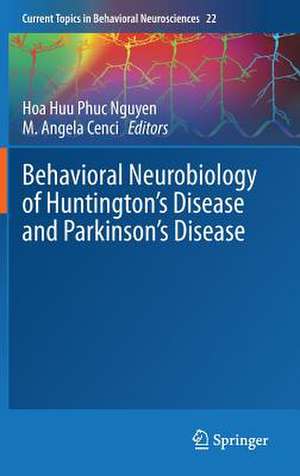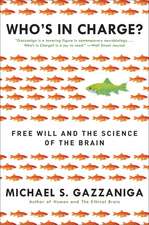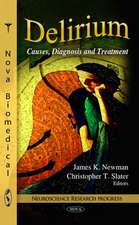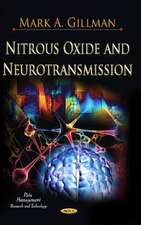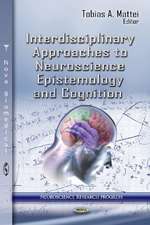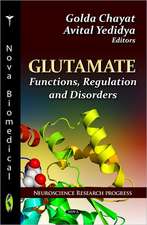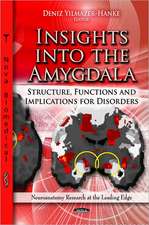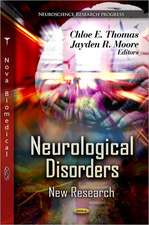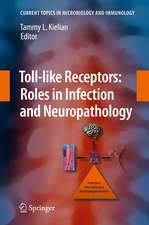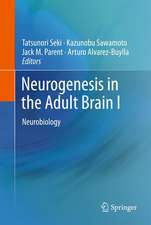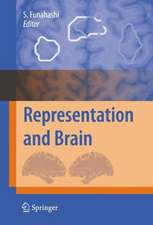Behavioral Neurobiology of Huntington's Disease and Parkinson's Disease: Current Topics in Behavioral Neurosciences, cartea 22
Editat de Hoa Huu Phuc Nguyen, M. Angela Cencien Limba Engleză Hardback – 9 iun 2015
| Toate formatele și edițiile | Preț | Express |
|---|---|---|
| Paperback (1) | 646.11 lei 6-8 săpt. | |
| Springer Berlin, Heidelberg – 29 oct 2016 | 646.11 lei 6-8 săpt. | |
| Hardback (1) | 652.49 lei 6-8 săpt. | |
| Springer Berlin, Heidelberg – 9 iun 2015 | 652.49 lei 6-8 săpt. |
Din seria Current Topics in Behavioral Neurosciences
- 18%
 Preț: 1226.60 lei
Preț: 1226.60 lei - 20%
 Preț: 1005.04 lei
Preț: 1005.04 lei - 18%
 Preț: 1223.25 lei
Preț: 1223.25 lei - 18%
 Preț: 1220.57 lei
Preț: 1220.57 lei - 18%
 Preț: 1548.56 lei
Preț: 1548.56 lei - 18%
 Preț: 1233.52 lei
Preț: 1233.52 lei - 18%
 Preț: 1242.52 lei
Preț: 1242.52 lei - 18%
 Preț: 1219.63 lei
Preț: 1219.63 lei - 18%
 Preț: 1222.31 lei
Preț: 1222.31 lei - 18%
 Preț: 952.09 lei
Preț: 952.09 lei - 18%
 Preț: 1123.19 lei
Preț: 1123.19 lei - 18%
 Preț: 957.75 lei
Preț: 957.75 lei - 18%
 Preț: 952.26 lei
Preț: 952.26 lei - 18%
 Preț: 1229.10 lei
Preț: 1229.10 lei - 18%
 Preț: 954.62 lei
Preț: 954.62 lei - 18%
 Preț: 955.56 lei
Preț: 955.56 lei - 5%
 Preț: 719.59 lei
Preț: 719.59 lei - 5%
 Preț: 716.28 lei
Preț: 716.28 lei - 18%
 Preț: 1399.43 lei
Preț: 1399.43 lei - 5%
 Preț: 720.10 lei
Preț: 720.10 lei - 18%
 Preț: 1564.35 lei
Preț: 1564.35 lei - 18%
 Preț: 968.65 lei
Preț: 968.65 lei - 18%
 Preț: 958.25 lei
Preț: 958.25 lei - 18%
 Preț: 1548.74 lei
Preț: 1548.74 lei - 18%
 Preț: 1121.13 lei
Preț: 1121.13 lei - 18%
 Preț: 1389.62 lei
Preț: 1389.62 lei - 24%
 Preț: 1163.25 lei
Preț: 1163.25 lei - 18%
 Preț: 1001.02 lei
Preț: 1001.02 lei - 24%
 Preț: 1231.03 lei
Preț: 1231.03 lei - 18%
 Preț: 1394.45 lei
Preț: 1394.45 lei
Preț: 652.49 lei
Preț vechi: 767.63 lei
-15% Nou
Puncte Express: 979
Preț estimativ în valută:
124.85€ • 130.71$ • 103.31£
124.85€ • 130.71$ • 103.31£
Carte tipărită la comandă
Livrare economică 05-19 aprilie
Preluare comenzi: 021 569.72.76
Specificații
ISBN-13: 9783662463437
ISBN-10: 3662463431
Pagini: 380
Ilustrații: XIII, 397 p. 95 illus., 25 illus. in color.
Dimensiuni: 155 x 235 x 30 mm
Greutate: 0.75 kg
Ediția:2015
Editura: Springer Berlin, Heidelberg
Colecția Springer
Seria Current Topics in Behavioral Neurosciences
Locul publicării:Berlin, Heidelberg, Germany
ISBN-10: 3662463431
Pagini: 380
Ilustrații: XIII, 397 p. 95 illus., 25 illus. in color.
Dimensiuni: 155 x 235 x 30 mm
Greutate: 0.75 kg
Ediția:2015
Editura: Springer Berlin, Heidelberg
Colecția Springer
Seria Current Topics in Behavioral Neurosciences
Locul publicării:Berlin, Heidelberg, Germany
Public țintă
ResearchCuprins
Clinical Aspects of Huntington’s Disease.- The Neuropathology of Huntington’s Disease.- Neurobiology of Huntington’s Disease.- Mouse Models of Huntington’s Disease.- Transgenic Rat Models of Huntington’s Disease.- Large Animal Models of Huntington’s Disease.- Therapeutic Strategies for Huntington’s Disease.- Clinical and Pathological Features of Parkinson’s Disease.- Symptomatic Models of Parkinson’s Disease and L-DOPA-Induced Dyskinesia in Non-human Primates.- Neuroinflammation in Parkinson’s Disease Animal Models: A Cell Stress Response or a Step in Neurodegeneration?.- Viral Vector-Based Models of Parkinson’s Disease.- Transgenic Rodent Models to Study Alpha-Synuclein Pathogenesis, with a Focus on Cognitive Deficits.- Modeling LRRK2 Pathobiology in Parkinson’s Disease: From Yeast to Rodents.- Models of Multiple System Atrophy.
Textul de pe ultima copertă
Motor dysfunction and cognitive impairment are major symptoms in both Huntington’s Disease (HD) and Parkinson’s Disease (PD). A breakthrough in HD research occurred in 1993, with the identification of the gene causing this devastating monogenetic illness. Since 1996, several genes were reported to cause familial forms of PD. Following these genetic discoveries, a variety of genetic disease models were generated, providing completely novel opportunities to explore the neurobiological basis of HD and PD. Genetic models allow us to study the earliest manifestations of the diseases both behaviorally and neuropathologically, and provide tools to probe molecular pathways of neurodegeneration. Additionally, neurotoxic animal models allow us to reproduce neurochemical and cellular events of great pathophysiological importance. In the PD field, neurotoxic animal models remain the preferred option to reproduce symptomatic features of the human disease that are responsive to dopaminergic pharmacotherapies. In addition, neurotoxic PD models are often used to investigate pathways of mitochondrial dysfunction, oxidative stress, and neuroinflammation. This book provides up-to-date reviews on current animal models of both HD and PD. These animal models are essential to investigate links between the pathobiology and the behavioral abnormalities associated with these disorders.
Caracteristici
Gives an overview of the clinical aspects of Huntington’s Disease (HD) and Parkinson’s Disease (PD) and reviews the construct, face and predictive validity of animal models Provides information on which model to choose for specific research questions and on how they can be used for therapeutic target validation and treatment trials Written by renowned researchers in the field Includes supplementary material: sn.pub/extras
